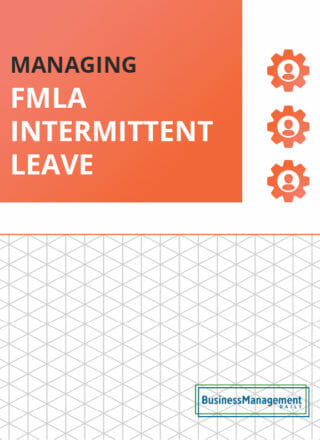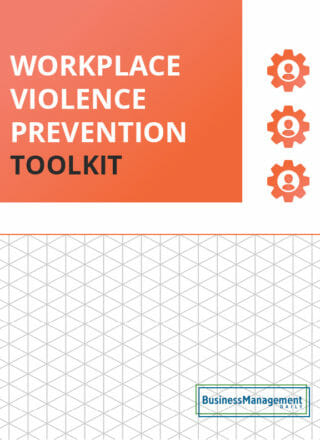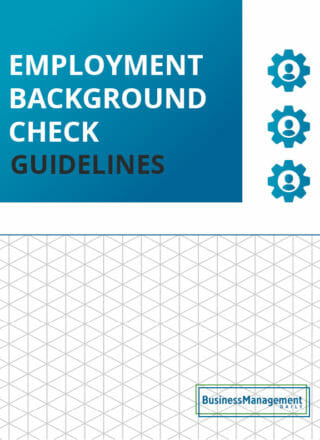How to recognize sexual harassment at work
You would never tolerate sexual harassment in your workplace. But are instances of sexual harassment going unnoticed?
Bill from accounting jokingly flirts with his “work wife” Martha every day. A coworker overhears Bill making a sexual comment towards Martha and reports the behavior. You know that it’s harmless and that Bill is married with children, so you don’t intervene or speak with Martha.
Allan the Sales Manager is making lewd comments on Alice the new hire’s Instagram photos. That seems to be outside the scope of the workplace, and you figure that Alice can simply block Allan if she feels uncomfortable.
Many employers who think they have sound policies in place to report sexual harassment are blindsided by EEOC complaints. Why? A supervisor or manager did not recognize sexual harassment when it was reported or discovered.
Not understanding the signs of sexual harassment can have grave consequences for your business.
Forms of sexual harassment
Sexual harassment can take many forms, some more obvious than others. Some types of sexual harassment include:
-
Making conditions of employment, raises, or promotions dependent upon sexual favors, either explicitly or implicitly. This is often referred to as quid pro quo harassment.
-
Verbal harassment of a sexual nature in the workplace, including the use of slurs related to an employee’s sexual orientation.
-
Creating a hostile work environment through intimidating, demeaning, hostile, or offensive sexual behavior or verbal harassment related to a person’s sex or sexual orientation.
-
Inappropriate touching or unwanted physical contact.
-
Unwelcome sexual advances of any kind.
- Leering or inappropriate gestures.
-
Sharing sexual stories, fantasies, or materials in the workplace.
-
Sending unwanted sexually explicit photos, emails, instant messages, or text messages.
Sometimes these acts are overt, while others are more subtle and can easily be overlooked. Employers must be diligent in recognizing and taking action when sexual harassment is observed or reported.
Recognizing sexual harassment
Managers and supervisors have a responsibility to take measures to stop sexual harassment from occurring and intervene in cases of sexual harassment. However, some forms of sexual harassment may be harder to recognize or more commonly overlooked.
Here are some examples of behavior that supervisors may not think of as sexual harassment, but courts may.
Sexual banter or jokes
Off-color jokes are commonplace in many workplaces, but when they make an employee uncomfortable, they cross the line. When a worker complains, the behavior must be addressed. If it persists, it could spell liability for the employer.
It’s typically best to ban sexual jokes, innuendos, or other banter that a reasonable person would interpret as being of a sexual nature. There are some cases where this may need to be modified slightly due to the nature of your business, such as owning a bakery that offers special designs for bachelorette parties or working at a reproductive health center, but even then sexual comments or jokes directed towards coworkers can be banned.
Malicious gossip
It’s almost impossible to prevent any gossip from occurring in your workplace, but when the gossip involves someone’s sexual orientation, gender, or rumors about their sex life you need to intervene.
Take the example of a woman that worked for Reema Consulting in its warehouse. She began as a clerk, but rapidly rise to Assistant Operations Manager of the facility after just two years and six promotions. About two weeks after assuming that position, she learned that some male employees were circulating “an unfounded, sexually explicit rumor” that “falsely and maliciously portrayed her as having had a sexual relationship” with a higher-ranking manager in order to obtain the management position. She believed the rumor started with a male co-worker who was jealous of her success.
To make matters worse, she claimed that the highest-ranking manager at the facility participated in spreading the rumor. She complained to HR about the harassment, and then found herself the target of accusations that she was harassing others. The company then fired her. She sued, alleging sex discrimination.
Ultimately, the 4th Circuit Court of Appeals ruled the alleged rumor that a female subordinate has sex with her male superior to obtain a promotion implied that she used her “womanhood, rather than merit, to obtain from a man, so seduced, a promotion,” traded in a deeply rooted perception that women use sex to achieve success. And that, according to the court, was discrimination based on sex. (Parker v. Reema Consulting, No. 18-1206, 4th Cir.,2019)
Male workers complaining of sexual harassment
Sexual harassment towards male employees, particularly when the perpetrator is female, is often overlooked. In 2019, 16.8% of sexual harassment complaints the US Equal Employment Opportunity Commission (EEOC)received were filed by males.
Consider this example: A 22-year-old man worked as a manager at a San Jose, California Chipotle restaurant after transferring from another location. He had worked for the chain since graduating from high school. Once at the San Jose location, he claimed his female general manager immediately began sexually harassing him. He complained to his team manager twice, but nothing changed. He then quit and filed an EEOC complaint outlining her behavior. The EEOC filed suit on his behalf. Among the allegations: The female general manager told Austin, “I’ll pay for sex,” “I want to watch you have sex with your girlfriend,” and “You’re hot.” She also frequently talked about her sex life and made sexual gestures. She also direct-messaged the man through Instagram pictures of herself in underwear and kept a “scoreboard” in her office, grilling employees on whether they had sex the night before their shifts.
Her behavior also included grabbing the man’s buttocks. The company agreed to settle the case with a $95,000 payment and promises to train all employees on sexual harassment. (EEOC v. Chipotle Mexican Grill, No. 5:17-CV-05382, ND CA 2019).
Consensual relationships
Consensual relationships in the workplace can spell big trouble for employers. Such romances may not look like sexual harassment to outside observers. But once in a while, these morph into something else entirely. A spurned supervisor may lash out to punish her former lover. Or a dumped subordinate may decide the relationship wasn’t so consensual after all.
What’s an employer to do? Requiring employees to sign a consensual relationship agreement may help. However, it’s important to note that consent can be withdrawn at any time and sexual assault can occur even if the parties were in an established romantic relationship. Having a relationship agreement on file does not mean that you do not need to investigate any resulting sexual harassment claims.
Some employers attempt to ban any workplace romantic relationships. At minimum, it’s a good idea to ban relationships between supervisors and subordinates. This power dynamic can lead to unhealthy or coercive relationships or sexual activity.
Consult with your attorney to determine the best approach for your business.
Text messages and social media
These days harassment often occurs digitally. This can be harder for employers to identify or prevent. After all, you can’t keep track of what your employees do on their own time or access their outside communications.
However, if it does come to a manager’s attention, digital harassment needs to be taken seriously. Common examples of digital sexual harassment can include leaving lewd or offensive comments on a coworker’s Instagram pictures and making unwelcome sexual advances over text messages or social media direct messages.
Having a well-defined social media policy in addition to your sexual harassment policy can help employers clarify what online behavior is appropriate. Some businesses also request that managers or supervisors refrain from following or interacting with direct reports on non-professional social media platforms.
How to prevent sexual harassment claims
The best way to protect your business from EEOC claims and lawsuits is to have clear policies in place and take every report or instance of sexual harassment seriously.
The best rule of thumb is to document and investigate all instances in which you believe sexual harassment may have occurred. Sometimes recognizing sexual harassment can be tricky. It’s better to be overly cautious than to accidentally overlook something serious. If the investigation leads to a finding that sexual harassment did not occur, then close out the case and do not take any disciplinary action. If you find out that something was amiss, take corrective action to ensure the safety of any victims of workplace sexual harassment.
For more tips on staying compliant with business laws, check out the Employer’s Practical Legal Guide from Business Management Daily.





